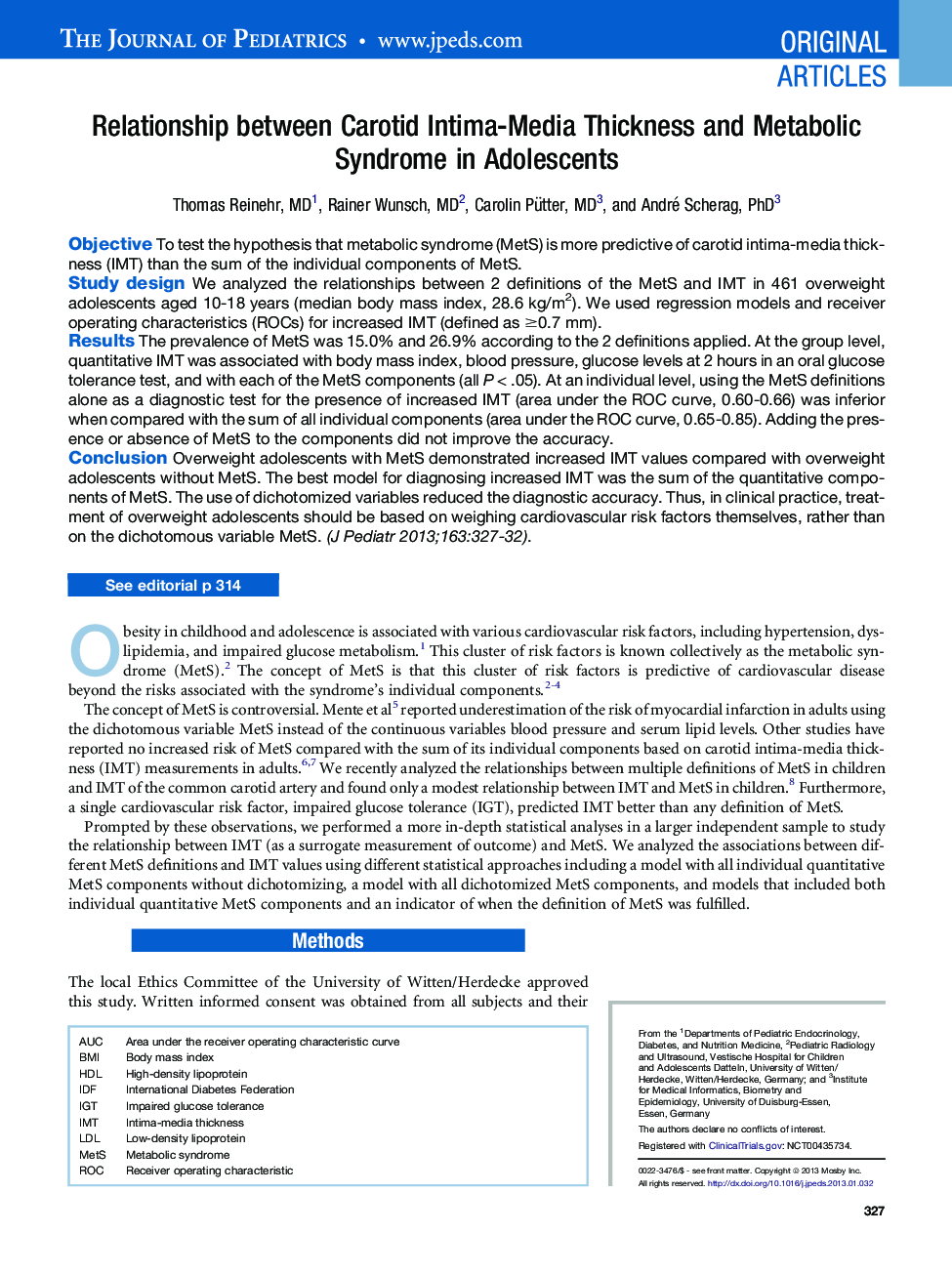| کد مقاله | کد نشریه | سال انتشار | مقاله انگلیسی | نسخه تمام متن |
|---|---|---|---|---|
| 6223454 | 1607465 | 2013 | 10 صفحه PDF | دانلود رایگان |
ObjectiveTo test the hypothesis that metabolic syndrome (MetS) is more predictive of carotid intima-media thickness (IMT) than the sum of the individual components of MetS.Study designWe analyzed the relationships between 2 definitions of the MetS and IMT in 461 overweight adolescents aged 10-18 years (median body mass index, 28.6 kg/m2). We used regression models and receiver operating characteristics (ROCs) for increased IMT (defined as â¥0.7 mm).ResultsThe prevalence of MetS was 15.0% and 26.9% according to the 2 definitions applied. At the group level, quantitative IMT was associated with body mass index, blood pressure, glucose levels at 2 hours in an oral glucose tolerance test, and with each of the MetS components (all P < .05). At an individual level, using the MetS definitions alone as a diagnostic test for the presence of increased IMT (area under the ROC curve, 0.60-0.66) was inferior when compared with the sum of all individual components (area under the ROC curve, 0.65-0.85). Adding the presence or absence of MetS to the components did not improve the accuracy.ConclusionOverweight adolescents with MetS demonstrated increased IMT values compared with overweight adolescents without MetS. The best model for diagnosing increased IMT was the sum of the quantitative components of MetS. The use of dichotomized variables reduced the diagnostic accuracy. Thus, in clinical practice, treatment of overweight adolescents should be based on weighing cardiovascular risk factors themselves, rather than on the dichotomous variable MetS.
Journal: The Journal of Pediatrics - Volume 163, Issue 2, August 2013, Pages 327-332.e4
